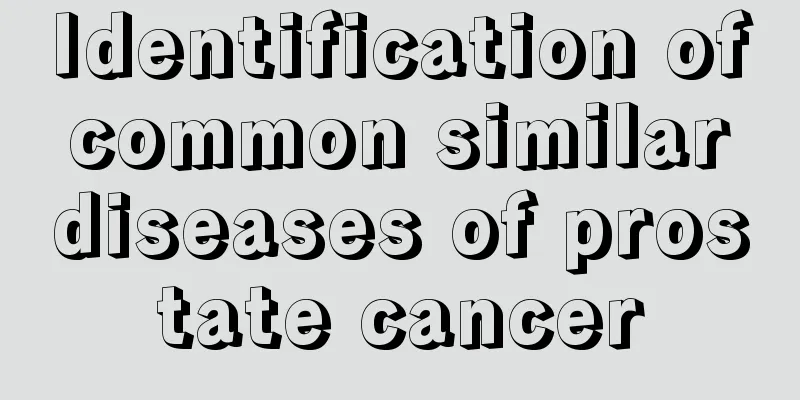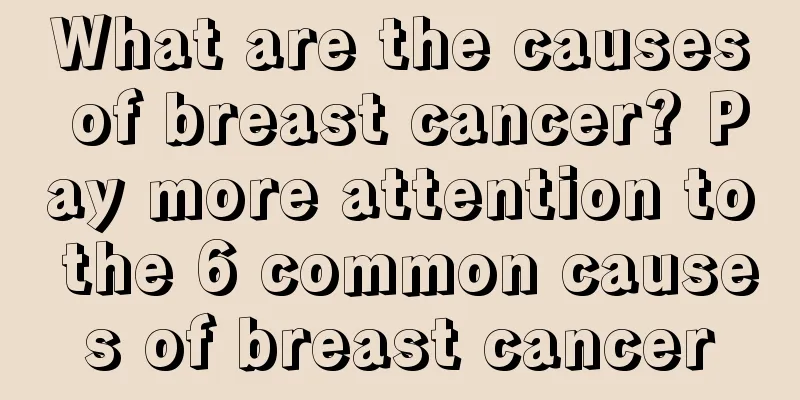Identification of common similar diseases of prostate cancer

|
Prostate cancer is a common type of malignant tumor in men, but there are many diseases similar to prostate cancer clinically. They must be carefully distinguished. Otherwise, if misdiagnosed, it will not only aggravate the condition but may also be life-threatening. Prostate cancer is one of the main causes of cancer death in men in Europe and America. The incidence rate increases with age. Half of the prostates of men over 80 years old have cancer lesions, but the actual number of clinical cases is far lower than this number. There are obvious regional and racial differences in the incidence of prostate cancer. According to statistics, the incidence rate is lowest in Chinese, highest in Europeans, and between Africa and Israel. my country and Japan are low-incidence areas for prostate cancer, but the number of latent cancer lesions found in autopsy of prostate segment sections of men over 50 years old is similar to that in Europe and America. Therefore, some people believe that cancer grows slower in Orientals than in Westerners, and there are fewer clinical cases. There are many diseases with similar clinical symptoms of prostate cancer, so how should they be distinguished? 1. It should be differentiated from prostate hyperplasia: The two are generally easy to distinguish. However, in the hyperplastic prostate glands, the epithelial cells in some areas are atypical in morphology and can be mistaken for cancer. The key points of differentiation are: the alveoli in the hyperplastic glands are larger, the surrounding collagen fiber layer is intact, the epithelium is double-layered and high-columnar, the cell nucleus is smaller than that of prostate cancer patients and is located at the base of the cell, and the glands are arranged regularly to form obvious nodules. 2. Differentiation from prostate atrophy: Prostate cancer often starts from the atrophic part of the gland, so it should be carefully differentiated. Atrophic alveoli are sometimes tightly clustered, atrophic and smaller, and the epithelial cells are cubic with large nuclei, which is very similar to cancer. However, this type of atrophy often involves the entire lobule, the collagen connective tissue layer is still intact, the matrix is not invaded, but it itself is sclerotic and atrophic. 3. Differentiation from prostate squamous epithelium or transitional epithelium metaplasia: It often occurs in the healing part of the infarct area within the gland, and the squamous epithelium or transitional epithelium is well differentiated without degeneration or splitting. The most prominent feature of metaplasia is ischemic necrosis or fibrous connective tissue matrix lacking smooth muscle. 4. Granulomatous prostatitis: The cells are large and can aggregate into sheets. They have transparent or light red stained cytoplasm and small vesicular nuclei, which are very similar to prostate cancer, but they are actually macrophages. Another type of cells is polymorphic, with condensed nuclei, vacuolated, small in size, arranged in rows or clusters, and sometimes some acini can be seen. When distinguishing, it should be noted that granulomatous prostatitis rarely forms acini, and the relationship between the lesions and normal glandular ducts remains unchanged. Degenerative amyloid bodies and multinucleated giant cells are often seen. The cells of prostate cancer are low columnar or cubic, with clear cell walls, dense eosinophilic cytoplasm, larger nuclei than normal, and may have variations in staining and morphology, and inactive division. Its acini are small, lack of curved tubules, completely lose the normal arrangement morphology, irregularly infiltrate the matrix, and the collagen connective tissue layer no longer exists. The acini contain a small amount of secretions, but rarely amyloid bodies. If prostate cancer undergoes obvious degeneration, the tissue structure will completely disappear, and there will be no tendency for acini to form. Warm reminder: It is very necessary to do a good job of distinguishing cancer. Cancer treatment is generally troublesome, so care must be taken to avoid misdiagnosis during the treatment process. Otherwise, not only will the treatment effect be poor, but there may also be other side effects. |
<<: These 5 factors increase the risk of prostate cancer
>>: What are the typical complications of prostate cancer
Recommend
Why do I catch colds so often?
The frequent occurrence of colds mainly depends o...
The significance of histopathological examination in the diagnosis and classification of skin cancer
Skin cancer is a highly malignant cancer. Among t...
What should I do if the hepatitis B virus (HBsAg) is serious?
Liver disease is a very common disease in life, e...
How long can you live with advanced prostate cancer?
The most concerning issue for prostate cancer pat...
Can bitter melon and carrot be eaten together
Bitter melon and carrots can be eaten together. A...
What are the symptoms of fibroids
In daily life, fibroids are very common. When thi...
Does double eyelid surgery hurt?
In this age of beauty, everyone wants to have a p...
Is it possible that rectal cancer is inherited?
Cancer is a disease that is difficult to cure com...
How long does it take to live in after spraying latex paint
Generally, you cannot move in immediately after s...
This body is too short, sooner or later you will get a heart attack
A life expectancy survey report by researchers at...
How to remove the smell in the toilet
The toilet is a place we use frequently in our da...
What are the effects of crisp pear
Many people have eaten crisp pears, which are als...
Let me introduce to you the biological immunotherapy method of melanoma
Many people must have heard of melanoma, but how ...
Why do I always feel like retching and vomiting?
Every reaction of our body may imply the health s...
The common causes of pancreatic cancer are as follows
The cause of pancreatic cancer has always been th...









